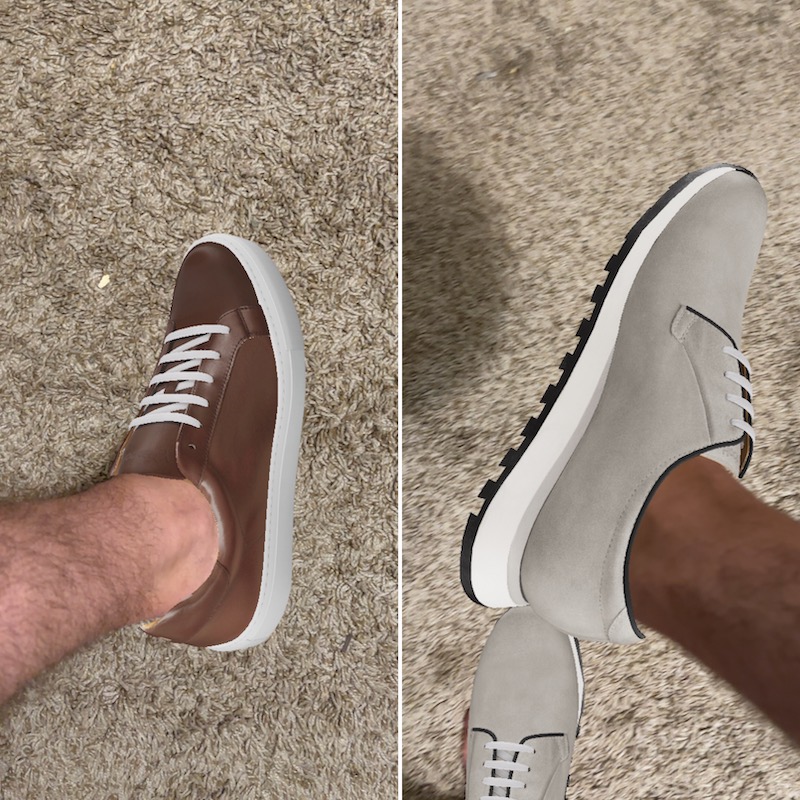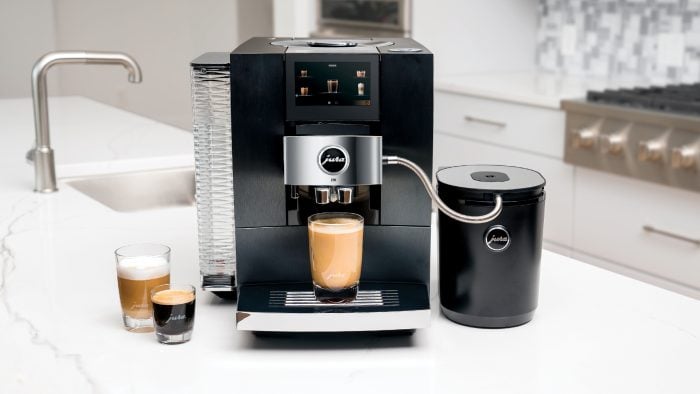I’ve never been one to enjoy shoe shopping. It’s not that I don’t like new shoes, but the whole affair just isn’t for me. This, combined with me not trusting shoes purchased online because I never know how they’ll really look on me, means that when I do get a new pair I expect them to last and fit perfectly.
That said, I’m 10 months into fatherhood and up until recently I didn’t have a good pair of dad shoes. I say recently because a few weeks ago I tried out Hockerty’s AR Try On experience, the brand’s inaugural implementation of augmented reality. I started with the shoe design—clicking through a multitude of different style options, colorways, materials, and customizations while “trying on” my options through AR. I may think I know what I want, but there’s a reason I’m not a shoe designer. Getting to see what those designs would look like on my feet steered me away from my worst inclinations as well as my most basic ones.

“The technical architecture of our sneaker configurator consists of layered technologies,” Alberto Gil, Hockerty cofounder, explains in an email. “The interface allows users to visualize changes on a 3D model in real-time, and this model itself comprises numerous parts, each offering a myriad of combination possibilities. The final layer involves the system which overlays this customized 3D model onto the user’s feet using smartphone camera capabilities.”

What I landed on was a classic dad shoe through and through. It had elements from styles that I like without much noticeable branding on the side (other than a custom engraved “NH”). A few weeks after my order, the shoes were at my door and have been getting good use since.
Hockerty started more than a decade ago as a made-to-order online clothing company with a focus on suits and shirts. Gil describes Hockerty a “tech company that specializes in custom clothing.” The brand’s algorithm has learned over the past 13 years how to narrow down on the right fit and measurements on just basic information. The options for customization run the gamut, with more than 500 fabrics available to choose from and a network of tailors to make any adjustments if needed. These days, Hockerty and its sister brand Sumissura sell a wide range of casual clothing as well as formalwear. And since the clothing is made to order, there’s less waste from overproduction of clothing that eventually goes unpurchased.
Cool Material caught up with Gil over email to learn more about what it means to be a tech-first clothing company today that’s been using AI since before it was a buzzword.
This interview has been edited for length and clarity.
Cool Material: What was it in your experience in the clothing industry and with tailors that inspired you to start all of the services that Hockerty currently provides?
Alberto Gil: Interestingly, our foundation for Hockerty wasn’t rooted in the clothing industry or with tailors. Instead, we came from technological and entrepreneurial backgrounds. Hockerty began as a modest side project. However, as we delved deeper, we quickly recognized its potential and it rapidly evolved to capture our full attention and dedication.
What are some of Hockerty’s technology advantages that it has over competitors to get the perfect size fit virtually?
It is no secret that Hockerty is a company that relies strongly on technology to be able to stand out over its competitor. Several developments play an important role to allow us to offer the best fit. First and foremost is our predictive measurement algorithm. From our early days, we noticed the difficulties customers encountered when attempting to take precise body measurements. To remedy this, we crafted an advanced algorithm that can accurately estimate body measurements using basic inputs like height, weight, and age. This not only makes the measurement process more user-friendly, but also flags potential inconsistencies that might arise from manual data entry.
Complementing this is our commitment to quality control on the production line. We’ve incorporated computer vision based algorithms that check the measurements of each garment, ensuring it aligns seamlessly with a customer’s unique specifications.
However, in the rare instance that a garment isn’t a perfect fit, our partner network takes the lead. We’ve established local hubs where customers can receive complimentary alterations, guaranteeing an ideal fit. In such a case, the process ends examining the customer’s measurement profile. If inaccuracies are found, adjustments are made, ensuring subsequent orders are a perfect fit right from the outset.
What is Hockerty’s process to ensure that all of its clothing and shoes have equal quality despite being so personalized?
Crafting custom garments naturally requires heightened attention to detail. Given the bespoke nature of each item, some processes are inherently more manual, resulting in subtle variations. For instance, while the stitching on a mass-produced item might appear more uniform due to mechanized precision, a custom garment may exhibit the unique touch of the artisan. To many, including myself, this distinctiveness is part of its charm.
The production pace for our custom garments is deliberately slower compared to mass-produced ones. This pace allows our artisans the time and space to invest their skillset fully into each piece, ensuring its quality. Most importantly, when it comes to quality assurance, our approach is more meticulous than conventional mass production methods. In standard mass production, perhaps one in every 500 pieces undergoes inspection. At Hockerty, each and every piece is subjected to rigorous quality control checks to maintain our commitment to excellence.




